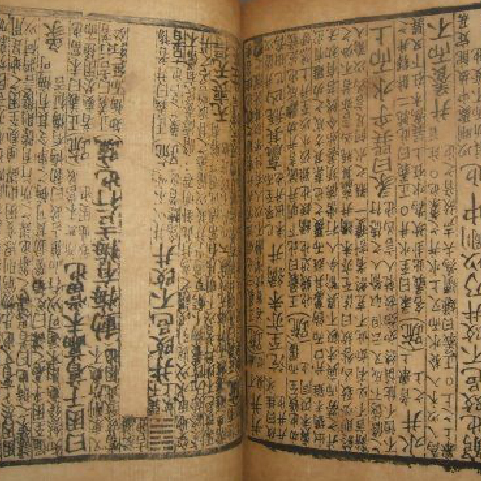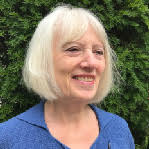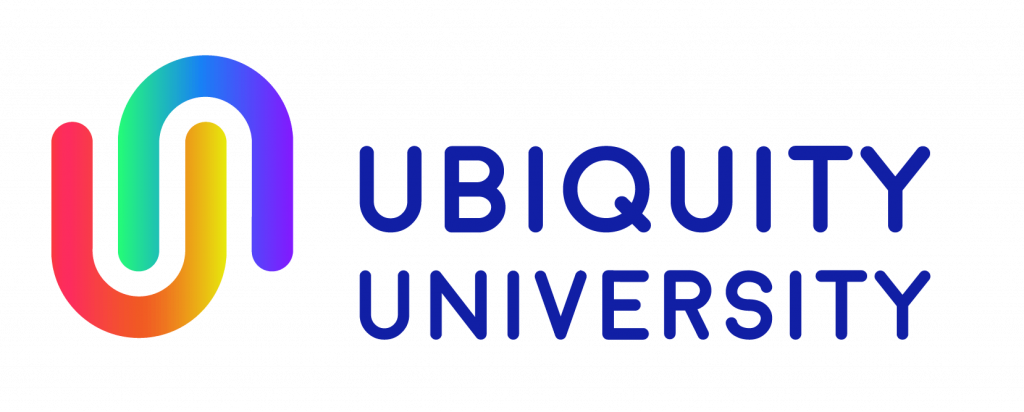
Course Description
The I Ching opens the door to a fascinating and complex cultural world. A Chinese oracle book, it offers profound counsel on life issues and, on special occasions, predictive divination. This latter requires preparation and a respectfully tuned relationship by the reader (or interpreter) of the I Ching to communicate an energetic waveband of intuition for the questioner. Being attentive is important, and passive absorption of its wisdom is exchanged for active participation. A line of the I Ching says of new birth: “This is not to say, however, that he himself should look on passively at what is happening. He must lend his hand and participate with inspiration and guidance.” It is in this way that the I Ching tunes the rhythm of the soul.
If you are using the book for your own question, you become the reader and questioner at the same time and enter the wisdom of the spirits and the ancestors. In this liminal space, we are never alone. Intellectual rigor is, for the I Ching, the sharp sword of discrimination, which privileges the value of the feeling in the heart. The questioner is then able to determine priorities and can act and use psychic energies at the correct pitch. The soul enters a participating state, stepping into the changing forms of the magical river of life. You are involved in the creation of your destiny through this poetic and symbolic world.
I introduce the series of four presentations with an experience of the I Ching. Its presence permeated the atmosphere of my room as I was forming my question and moved me to another place, another country, from where I received the response. I will tell you the full story. This synchronicity occurred just after I had agreed to this series on the I Ching and I took it as an affirmation that I could give these presentations. From every vantage point, the ancient Chinese wisdom of the I Ching is relevant in our lives today. I have studied it for over 50 years and seen how it interweaves with other Chinese disciplines such as Chinese yoga in the form of Qi Gong or Tai Chi, religious rituals of the ancestors, music, meditation, and alchemy. We will look at these different aspects, for they are expressed in the I Ching. There are many translations of the book, but the edition I use for the presentations is: The I Ching or Book of Changes: The Richard Wilhelm Translation, rendered into English by Cary F Baynes.
Weekly Schedule
Week 1 • The Mythical History of the I Ching
The I Ching or Book of Changes emerged between 2000 and 2,500 BCE. The book that I use has the contents of between 4,000 and 4,500 years of wisdom, thought, experiment, meditation, and contemplation. It is probably the oldest divination system in the world, continuing to evolve and meet different times with the same depth.
Three sage kings created the I Ching, who contributed to the founding of Chinese culture. The first of these was Fu Hsi (Fuxi), the legendary First Emperor of China, who was a shaman, a diviner, and a magician. His rule represents the Golden Age for all those who came after him when humans and spirits communicated freely. Fuxi contemplated the shapes of heaven, of nature, and the patterns of the earth, of bird and animal markings. He spontaneously brought forth the trigram figures of the I Ching (3 line motifs) as a way to organize nature’s phenomena (for each trigram represents an element of nature such as earth, water, fire, metal, or wood). Through this magical communication, a constant flux of spirit kept the human world in order.
After the Golden Age of Fuxi the I Ching enters a declining era of troubles, wars, anxieties, and sorrows. The conflict between Chou the Tyrant, the last king of the Shang Dynasty (1520 – 1030 BCE), and King Wen, the spiritual reformer of the Chou Dynasty (1100 – 480 BCE) leads to the eventual supremacy of King Wen. His intention was to restore the Golden Age of Fuxi. He meditated on the I Ching when he was imprisoned by the Shang and re-arranged the eight trigrams to reflect the complexity of the modern world. King Wen added descriptions to the images, giving each hexagram a name and a divinatory message. His son, the Duke of Chou, added a commentary on the lines of the hexagrams. I will show slides of these images in my presentation to demonstrate this image-making process. The I Ching further evolved through Taoism, Buddhism, and Confucianism and we will look at these influences.
The first two hexagrams are regarded as the primal parents that gave birth to all the others: number 1, The Creative, and number 2, The Receptive. In these, we divine the meaning of the relationship of heaven and earth and all that lives and grows within the circulation of the seasons. We see how inter-relating phenomena link man and nature into a total worldview: an unequaled creative expression of spiritual culture.
Week 2 • The I Ching and Chinese Yoga
In the Book of Changes, there are three hexagrams that speak to us of yoga and meditation. In number 50, The Cauldron, expresses “the hints about the fostering of life as handed on by oral tradition in the secret teachings of Chinese yoga.” Yoga takes the form of Qi Gong (or Tai Chi and the martial arts) and meditation. This is likely referring to the yogic methods of Taoism where the path of immortality was cultivated, looking for perfect harmony between the body and the spirit. The Taoist interest in longevity and transformational alchemy is closely linked with the feelings of the heart as presented in the I Ching. When this hexagram is drawn we are looking at how to balance the energies of the body and spirit related to the question brought to the oracle.
The six lines making up a hexagram show the six stages towards heaven: the first two lines (counted upwards from the base) are earth, the middle two are the human being, and the last two are heaven. The alchemical phrase: As above, so below shows how heaven and earth reflect into each other through phenomena of nature. We will look at some of the ideas in “The Secret of the Golden Flower” a Chinese book on yoga and alchemy related to the I Ching.
The practice of Qi Gong (or Chinese yoga) originates over 4,000 years ago, like the I Ching, before Taoism began between the sixth and fourth century BCE. We will look at how this yogic method is woven into the book of divination – and even how it can be traced back to the ancient Shamanism of Northern China. The most celebrated devotee of the I Ching is Confucius (551- 479 BCE) who gave commentaries on the relationship of spiritual development to the collective moral qualities of an ordered society.
Week 3 • The I Ching – Divination and the Ancestors
For the ancient Chinese it would be impossible to think of divination without the presence of the ancestors, for divination connected an individual to the ancestor spirits. These connections are very subtle and not always related to direct blood relations. This is necessary even today and we will look at different ways of seeing ancestor spirits in modern times. For this, we will look into Jungian psychology as well as Taoism, which describes how the psychological aspects of our current life are integrated to help us experience wholeness. Carl Jung wrote the introduction to the edition of the I Ching that we use for these presentations. He looks at what connects us to our ancestors, as much as Taoism does, through the integration of prenatal experience as much as post-natal life in a psychological process. The distinction will be made between the community aspect of the ancestors and how the wandering or hermit-like sage might meet that experience differently, looking particularly at the Chinese sage Lao-Tzu as an example of this.
In hexagram 45, Gathering Together, we find an example of how the ancestors are included in the life of the community where they gather together to offer a sacrifice to the ancestors. This brings the spirit of the community together for a great undertaking, at the same time creating collective energy or force of truth. Of this the I Ching says, “Through … the living members of the family, the ancestors become so integrated into the spiritual life of the family that it cannot be dispersed or dissolved.” There are many ways of integrating the spirits of the ancestors, even though our communities today are no longer based on this mysterious experience. Within these rituals, we see how singing, music, and dance, present in the I Ching, elevate our nature to receive the cosmic connection.
Week 4 • The I Ching and Synchronicity
The process of consulting the oracle, of meeting the ancestors, is meant to bring one into relationship to cosmic processes, including that of synchronicity. This is why we can pull so many so-called ‘irrational’ threads together to create an image that offers a path of divination.
Marie-Louise von Franz says: “In our causal thinking we have made a big separation between psychic events and physical events…Right up to the 19th century the idea still persisted in the sciences (and it still does in those less developed) that only physical causes have physical effects and psychic causes have psychological effects…The question now being asked is whether there are interactions between these two lines. Is there anything like a psychic cause for physical events and vice versa.” Von Franz goes on to describe how the synchronistic thinking (which forms the basis of the I Ching) has never made a difference “between psychological and physical facts. For the synchronistic way of thinking it is even essential to watch both areas of reality, the physical and the psychic, and to notice that at the moment when one had these and these thoughts or these and these dreams – which would be psychological events – such and such outer physical events happened.” The problem of the time conditions is therefore a focus, for this complex of synchronistic events forms part of the divination, so we can weave together all the subjects spoken of in the four presentations and see the connection to the ancestors as a synchronistic moment.
Required Reading
If you are taking the course for academic credit, you will be required to read the following materials.
- The I Ching or Book of Changes, The Richard Wilhelm Translation, rendered into English by Cary F Baynes, with an introduction by C G Jung. (This is the edition used in the presentation).
- I Ching, The Classic Chinese Oracle of Change, translated by Stephen Karcher and Rudolf Ritsema (I recommend this for the good historical overview in the long introduction)
- The Secret of the Golden Flower, A Chinese Book of Life, translated and explained by Richard Wilhelm, with a foreword and commentary by C G Jung. (Chinese yoga and alchemy)
- On Divination and Synchronicity, The Psychology of Meaningful Chance, Marie-Louise von Franz
Optional Reading if you read French:
La voie du calme, Ke Wen & Shang Ming Liang (This is not translated but you can get it through Amazon.fr – it relates Chinese yoga to Taoism, Confucianism and Buddhism)
Post-Class Assignment (if taking course for academic credit):
Students taking the course for credit should submit a post-paper. Requirement for Bachelors level students is a 6-9 page post-paper, Masters level a 12-15 page paper, and Doctoral level 20-25 page paper, weaving together content from the lectures, discussions, reading materials, and your experiences related to the entire course. Artistic work is welcome to supplement your paper.
Papers should be written in APA style, with footnotes.
Faculty:
 Brenda Crowther, MA holds a BA (Hons) in Painting & Art History; MA in French Philosophy; and a Diploma in Analytical Psychology (Zürich & London.) She is a Jungian analyst and depth psychologist living in eastern France. She has published many articles and at present is working on a book about the relationship of the soul of the Earth to our dreams. Her inspiration for training as a Jungian analyst was the book she is presenting: Women Who Run with the Wolves – and of course, her dreams. Brenda grew up in a magical, remote region of England, and from early on it was nature and the art of storytelling from her mother that nourished her dreams and deepened her soul.
Brenda Crowther, MA holds a BA (Hons) in Painting & Art History; MA in French Philosophy; and a Diploma in Analytical Psychology (Zürich & London.) She is a Jungian analyst and depth psychologist living in eastern France. She has published many articles and at present is working on a book about the relationship of the soul of the Earth to our dreams. Her inspiration for training as a Jungian analyst was the book she is presenting: Women Who Run with the Wolves – and of course, her dreams. Brenda grew up in a magical, remote region of England, and from early on it was nature and the art of storytelling from her mother that nourished her dreams and deepened her soul.
Our shopping cart is simple and easy to understand. If you do not have a user account, you will be able to create one upon purchase. Save your username and password as you will need it to login to access course materials later. For more detailed, step-by-step instructions you can review our tutorial How to Purchase a Course. Again, if you experience any issues, please email Veronica Saldias at registrar@ubiquityuniversity.org.
Archived Webinar Contact Information:
Archived Webinars are completely on-demand for your convenience. If you have questions or require additional assistance, you may click the “Chat” button on the lower, left-hand side of the screen, and submit your question. Our help desk will respond as soon as possible.
Information about how we process refund or cancellation requests can be found here: Refund and Cancellation Policy.


